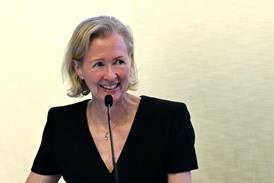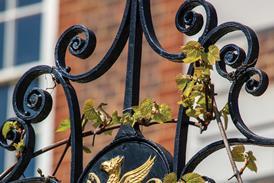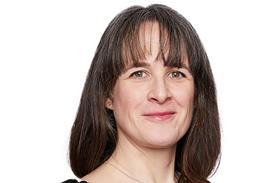Hyperbole demands that these two devices be played against each other to the death - but the truth is more complex. Each fits its respective niche brilliantly. The only problem will be working out which one you want more, because they both deliver.
Return of the king: BlackBerry 7130g
The last BlackBerry reviewed here, the 8700, was too narrow to be BlackBerry-tastic and too wide to be the smartphone it wanted to be. If it were an ancient warrior, in other words, it would be a crusader, trapped in a lift.
So, dressed in black, slim, and with the occasional flash of silver, the 7130g is a kendo-trained acrobatic ninja to the 8700's lumbering oaf. Where most BlackBerrys make allowances for Westerners' clumpy sausage fingers, the 7130g seems to have achieved the impossible - slimmed to the size of a slightly oversized phone, with only eight more entry keys than normal. It has SureType for predictive text entry, which is good - intuitive and adaptive. A small issue: unlike phones, the QWERTY keyboard laid over a numeric keypad will take time to get used to.
Lacking are WiFi or Voice over IP, a camera, and an ability to use its Bluetooth to swap files with other devices. These losses can be traded for less heft, however. Fresh and interesting on the 7130g are Yahoo! instant messaging, bags more power than a 7100, and a cracking styling job.
Yes, this a BlackBerry that actually looks, dare it be said, cool. You will not feel a fool holding it to your ear, surely the litmus test of any device that wants to replace your phone. This, of course, is what RIM intends - to attract people who have sat in a bar, looked at the devices on the table in front of them and thought: 'This is just getting out of hand.'
For your £50 or so a month (the device will be free), you get: a phone with BlackBerry e-mail, Web browsing, good call quality, quad-band GSM/GPRS and EDGE data capability, a top-flight screen and a responsive, understandable interface backed up by a quick processor and enough memory to see you through.
But man cannot live merely on features the finance chief would understand. Also in O2's version of the 7130g (currently the only provider) are two great additions. First, Texas Hold'em Poker - this is great stuff, make no mistake.
But the current king of mobile software bundle surprises is Google Maps. This is, it is not an understatement to say, one of the most useful things you can have on a mobile device. Once you use Google Maps on your 7130g to find your way to an office in a town you have never before visited, and got there without getting stressed, you will be a convert.
The myth made real: HTC TyTN
Yes, it has a silly name. No, you have never heard of the firm before. Yes, it looks remarkably similar to T-Mobile's MDA Vario. And yes, there are explanations for all these things - well, almost all.
HTC makes devices for all sorts - operators re-brand HTC's units to make their own offerings, as the IT industry calls them. This is why the TyTN looks like the MDA Vario - it is the next iteration of that very device. Why HTC has decided to release its devices outside of UK-operator backing is beyond forces natural and supernatural to suppose - who would splash out the £500+ required to buy a TyTN without a contract? But by the end of the year, expect to see re-branded versions of this in your operator's business shop.
Why is it so good? A slide-out keyboard that is actually usable. A touch-sensitive screen for general use. A form factor (an industry term that just means 'shape and size') that means you can escape foolishness if you want to hold it to your head. It is not as phone-like as the BlackBerry, which has what IT people call a 'candy bar' form factor, but it is still small enough. Wireless LAN and Bluetooth support. These were present in the previous, MDA-alike versions.
Now try adding 3G as well as support for the faster-than-3G system HSDPA, Windows Mobile 5.0 software, a BlackBerry-style scroll wheel and 'OK' button on the side, two cameras, and a processor that can handle Skype, and you have a package that makes a pretty convincing play for the über-device. This is good stuff.
It feels a noticeably heavier than the BlackBerry 7130g - 176g compared to the 7130's bantam-weight 120g - but the BlackBerry is not 3G and has no WiFi antenna and no camera, all things that add weight. The bottom line is that the TyTN is what we asked for when we lauded the MDA Vario and castigated Orange's SPV M5000: a device that could replace your laptop in a pinch, and does not make you look like an idiot in a restaurant.
For that, we can forgive a lot - for example, expect to shell out between £80 and £130 to buy, plus north of £40 a month. As for the silly name, only the IT industry would think it is a good idea. But the TyTN is hard to fault on anything serious, and will do almost anything you want. This summer, lawyers are feeling the love from IT vendors.
Charity Explorer provides a reputable reference tool for solicitors, will-writers and their clients who want to leave a legacy or charitable gift.
Visit Charity Explorer
Whether you are looking for legal expert witnesses, legal training/CPD providers, international law firms, administration of estates, legal software suppliers, barristers chambers or any other general legal service, the Legal Services Directory will provide a suitable option.
Visit Legal Services Directory

























No comments yet